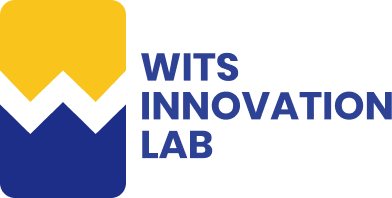Published - a year ago | 6 min read
The Future of Retail with ONDC: Predictions and Insights for India
India has more than 751 million active internet users, and the grocery e-commerce market alone is expected to reach $80.6 billion by 2032. Pioneering this change is the Open Network for Digital Commerce (ONDC), a new-age platform for business-to-consumer engagement. Currently, 45% of the online grocery sales in India are attributed to hyperlocal delivery, a number that is projected to rise to 70% by 2030. ONDC is all poised to accelerate this rapid growth by offering faster and more efficient delivery solutions and providing the necessary technological platform to retailers to succeed in the hyperlocal e-commerce segment.
This wave of retail commerce is not only catering to the increasing needs of speed and convenience but also altering the dynamics of the retail business in India. Now, let’s discuss the impact of ONDC on retail and its future prospects.
This wave of retail commerce is not only catering to the increasing needs of speed and convenience but also altering the dynamics of the retail business in India. Now, let’s discuss the impact of ONDC on retail and its future prospects.
1. Hyperlocal Delivery: Revolutionizing Convenience
The Trend: One specific delivery model that has emerged as a major strategic focus for companies today is hyperlocal delivery, which caters to consumers' demand for speed and convenience. Though, at present, the vast majority of the ecosystem in ONDC is based on hyperlocal delivery, especially in the Food & Beverage (F&B) sector, it does not mean that ONDC will be limited to local deliveries. ONDC also helps in intercity and international trade, especially in B2B exports.
Currently, about 90% of the deliveries made through ONDC are hyperlocal, with F&B dominating the market. However, the infrastructure of ONDC is being built comprehensively for a lot more than just local deliveries. With the growth of the platform, it is now allowing businesses to send products not only within cities but across cities and even across countries.
Currently, about 90% of the deliveries made through ONDC are hyperlocal, with F&B dominating the market. However, the infrastructure of ONDC is being built comprehensively for a lot more than just local deliveries. With the growth of the platform, it is now allowing businesses to send products not only within cities but across cities and even across countries.
Predictions:
Hyperlocal Improvements: While ONDC is still working on fast delivery systems, especially in sectors such as hyperlocal, they are set to expand beyond F&B to include retail and other items. With the advancement of the infrastructure in the logistics industry, the consumers will be able to get their goods delivered faster and more conveniently across a range of products.
Intercity and International Expansion: ONDC's role in the intercity delivery market will experience a significant increase in demand as companies expand and tap into ONDC's potential to reach more consumers. Even more interesting is the opportunity for cross-border commerce, where ONDC is already supporting business-to-business exports. This will be a revolutionary measure, making it easier for Indian businesses to access other international markets as never before.
B2B Export Potential: Besides consumer direct reach, ONDC is opening up possibilities for business to business export, which makes it well equipped for B2B exports. With the liberalization of global markets, ONDC will be enabling exporters desiring to take their products overseas, which will help to foster the expansion of Indian industries as well as enhance the country's participation in international trade.
Impact: However, it is in the intercity and international delivery areas that ONDC has the potential to really shine as it develops its hyperlocal delivery network further. By moving to B2B exports, the platform will help organizations not only feed the domestic market but also sell to other markets, both local and international, within the country. This will make ONDC an essential stakeholder in not only the hyperlocal convenience store market but also in the future of India's place in global commerce.
Intercity and International Expansion: ONDC's role in the intercity delivery market will experience a significant increase in demand as companies expand and tap into ONDC's potential to reach more consumers. Even more interesting is the opportunity for cross-border commerce, where ONDC is already supporting business-to-business exports. This will be a revolutionary measure, making it easier for Indian businesses to access other international markets as never before.
B2B Export Potential: Besides consumer direct reach, ONDC is opening up possibilities for business to business export, which makes it well equipped for B2B exports. With the liberalization of global markets, ONDC will be enabling exporters desiring to take their products overseas, which will help to foster the expansion of Indian industries as well as enhance the country's participation in international trade.
Impact: However, it is in the intercity and international delivery areas that ONDC has the potential to really shine as it develops its hyperlocal delivery network further. By moving to B2B exports, the platform will help organizations not only feed the domestic market but also sell to other markets, both local and international, within the country. This will make ONDC an essential stakeholder in not only the hyperlocal convenience store market but also in the future of India's place in global commerce.
2. AI-Driven Customer Experiences: Personalization at Its Best

The Trend: Customer experience is a vital area where Artificial Intelligence (AI) is gradually taking over, and the retail industry has been among the biggest beneficiaries. The planned focus of ONDC on using modern technologies such as AI is expected to completely redefine the way retailers engage with consumers. With the incorporation of conversational AI models, the retailers who are part of the ONDC will be able to improve the shopping experience through better interactions.
Predictions:
Enhanced Personalization: The conversational AI will allow retailers to communicate with the customers in real-time and provide them with highly personalized recommendations based on their interests, past actions, and previous purchases. This approach will make the shopping experience better for the customer and thus increasing their loyalty to the business.
Predictive Analytics: Retailers will also find it easy to manage inventories and work on their marketing strategies since AI will help them to predict the consumer needs and behavior patterns. Using insights derived from the application of AI, retailers can be in a position to predict and respond to trends effectively to ensure they are in a position to meet the needs of the customers.
Impact: The incorporation of conversational AI into the ONDC environment will hugely enhance commerce by enabling consumers to access and acquire relevant products. Retailers shall benefit from increased product exposure, higher click-through rates, and an overall superior sales performance. Such innovations as AI semantic search implemented at Mystore will not only improve the customer experience but also help the retailers to level up the playfield in the new digital landscape.
Predictive Analytics: Retailers will also find it easy to manage inventories and work on their marketing strategies since AI will help them to predict the consumer needs and behavior patterns. Using insights derived from the application of AI, retailers can be in a position to predict and respond to trends effectively to ensure they are in a position to meet the needs of the customers.
Impact: The incorporation of conversational AI into the ONDC environment will hugely enhance commerce by enabling consumers to access and acquire relevant products. Retailers shall benefit from increased product exposure, higher click-through rates, and an overall superior sales performance. Such innovations as AI semantic search implemented at Mystore will not only improve the customer experience but also help the retailers to level up the playfield in the new digital landscape.
3. Streamlined Supply Chains: Efficiency and Transparency
The Trend: A robust supply chain is crucial for the smooth operation of retail businesses. ONDC's framework will introduce transparency and efficiency into supply chains by providing standardized processes and improving stakeholder data sharing.
Predictions:
Improved Coordination: ONDC will facilitate better coordination between suppliers, manufacturers, and retailers, leading to more efficient inventory management and reduced stockouts or overstock situations.
Enhanced Transparency: With a standardized network, stakeholders can access real-time data, improving transparency and enabling quicker decision-making. This transparency will help track product origins, ensure quality, and promptly address supply chain disruptions.
Impact: Streamlined supply chains will result in cost savings for retailers and better product availability for consumers. Enhanced transparency will also build consumer trust and improve overall operational efficiency.
Enhanced Transparency: With a standardized network, stakeholders can access real-time data, improving transparency and enabling quicker decision-making. This transparency will help track product origins, ensure quality, and promptly address supply chain disruptions.
Impact: Streamlined supply chains will result in cost savings for retailers and better product availability for consumers. Enhanced transparency will also build consumer trust and improve overall operational efficiency.
4. Integration of Supply Chain Optimization: Streamlined Operations
The Trend: A strong supply chain is a critical element supporting the functioning of many retail companies. ONDC's framework will also inject more standardization and efficiency into the supply chain ecosystem through enhanced participant data sharing.
Predictions:
Improved Coordination: Through the help of ONDC, suppliers, manufacturers, and retailers will be able to work hand in hand and manage the inventory effectively to avoid situations where stock outs or overstocking occurs.
Enhanced Transparency: This also implies improved transparency, as stakeholders will access real-time data and make quick decisions. This will assist in identifying product sources, quality assurance, and quick response to supply chain breakdowns.
Impact: Efficient supply chain management will reduce retailers' costs and improve stock availability for consumers. It will also increase transparency, which will foster consumer confidence and increase efficiency.
Enhanced Transparency: This also implies improved transparency, as stakeholders will access real-time data and make quick decisions. This will assist in identifying product sources, quality assurance, and quick response to supply chain breakdowns.
Impact: Efficient supply chain management will reduce retailers' costs and improve stock availability for consumers. It will also increase transparency, which will foster consumer confidence and increase efficiency.
5. Support for Small and Medium Enterprises (SMEs): Expanding Market Reach
The Trend: ONDC seeks to achieve this by largely targeting SMEs and local retailers, who would otherwise be locked out by large platforms. This initiative will help SMEs access a bigger market and compete with larger players.
Predictions:
Increased Market Access: By adopting ONDC's standardized platform, SMEs can access more customers and gain more visibility, which will benefit them.
Enhanced Competitiveness: By empowering SMEs to compete with large retail companies, ONDC will help reduce the market domination of large retailers. Competition acts as a stimulus to innovation and enhancement of product quality.
Impact: Supporting SMEs will help enhance the range of choices in the retail market and increase competition. Consumers will be able to access more diverse products and services, while SMEs will have a chance to develop in the digital environment.
Enhanced Competitiveness: By empowering SMEs to compete with large retail companies, ONDC will help reduce the market domination of large retailers. Competition acts as a stimulus to innovation and enhancement of product quality.
Impact: Supporting SMEs will help enhance the range of choices in the retail market and increase competition. Consumers will be able to access more diverse products and services, while SMEs will have a chance to develop in the digital environment.
Conclusion
ONDC's approach to location tracking technology promises to revolutionize India's retail sector in the future. The future of retail is ONDC, with hyperlocal delivery, AI customer experience, supply chain optimization, digital payments, and SME support. This brings convenience and a better shopping experience to retailers and consumers as ONDC keeps pushing for change and advancement in the sector.
By adopting these changes, retailers will be able to address consumers' changing needs and wants and effectively seize new opportunities in the new economy.
By adopting these changes, retailers will be able to address consumers' changing needs and wants and effectively seize new opportunities in the new economy.
Are you looking for website design?
Contact us today to learn more about our services and how we can help you improve your website design.


Written by / Author
Manasi Maheshwari
Found this useful? Share With
Top blogs
Most Read Blogs
Wits Innovation Lab is where creativity and innovation flourish. We provide the tools you need to come up with innovative solutions for today's businesses, big or small.
© 2026 Wits Innovation Lab, All rights reserved
Crafted in-house by WIL’s talented minds

